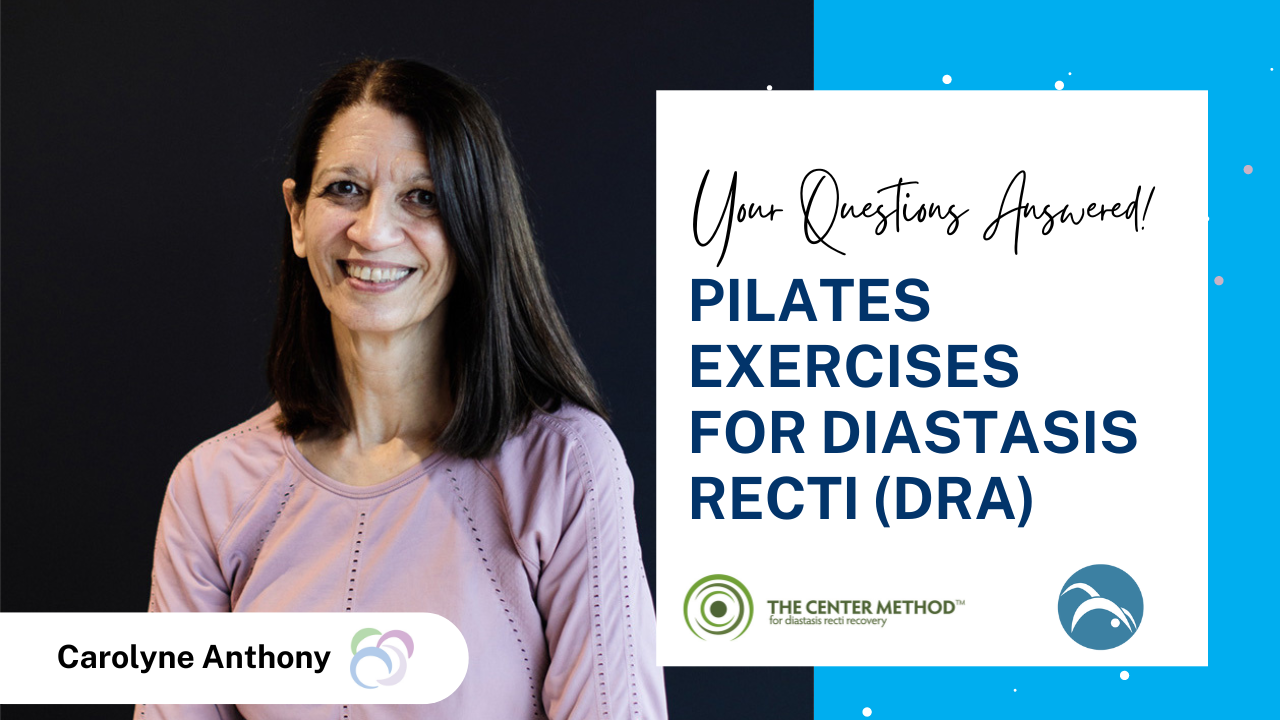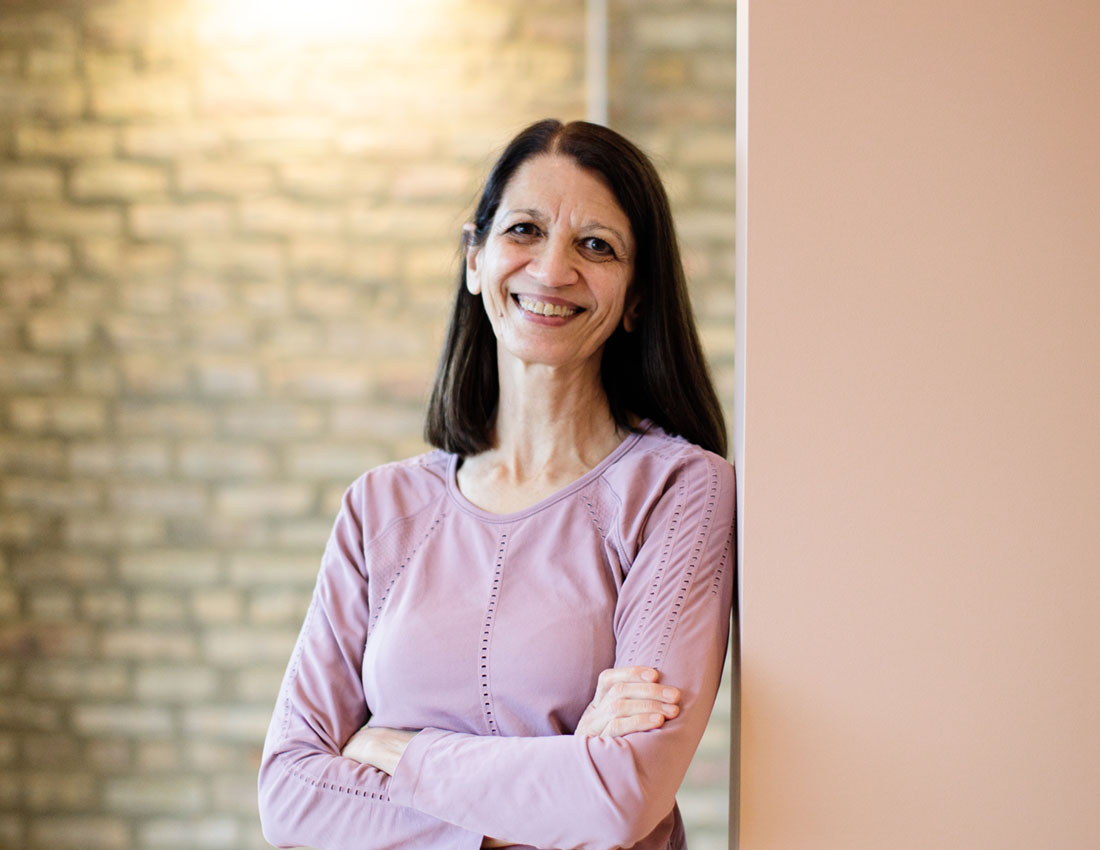
Diastasis Recti Abdominis (DRA) is a separation of the abdominal wall along the linea alba. Most of the time, this condition is associated with postpartum women, however, men can also present with DR. Here are some of the visual signs of abdominal separation:
- A bulge or pooch above or below the belly button
- Coning or doming of the abdominals when trying to contract abdominal muscles (e.g. during ab crunches)
- Softness or “mushy” feeling around the belly button.
Most of these visual signs can be summarized by the following – “belly pooch” or “mommy tummy”. As a result, most people who were diagnosed with DR want to strengthen their abdominals and close the gap. Pilates seems like a perfect solution to help in DR recovery since it is associated with a “stronger core and flatter belly” (whether it’s a myth or not, is a subject for another article :-)) Does it mean that Pilates exercises are safe and beneficial for diastasis recti recovery? Read on to find out.
While both men and women can present with DRA, women are definitely more emotionally and physically affected by this condition. While DR can cause physiological problems like pelvic floor issues, SI joint, and lower back pain, most women are deeply affected by this condition on an emotional level. I know that it was more of an emotional problem for me personally than anything else (you can read my story here.)
Most women want to get back in shape after giving birth and they get frustrated and even depressed when they get asked “When are you due?” 2 years after the birth of their last child. They don’t feel comfortable in certain clothes, and, ultimately, in their own bodies!
Bringing awareness to Diastasis Recti and educating Pilates and fitness professionals on how to train DR clients is the mission of Carolyne Anthony, the founder of The Center for Women’s Fitness. She dedicated her life’s work to women’s health and fitness, working with individual clients as well as providing comprehensive Pilates and movement specialist certifications and training courses.
In today’s exclusive interview for Pilates Bridge Carolyne answers the most common questions that Pilates teachers have about working with DR clients. Here are the questions that we discuss in the interview:
- What is Diastasis Recti Abdominis (DRA) and what populations are mostly affected by it?
- Is it possible to prevent Diastasis Recti?
- What complications are most common in postpartum women with DR?
- How does the fascial system connect to diastasis and the recovery process?
- The essential steps to recovery from Diastasis Recti.
- What exercises are good for Diastasis Recti that are in the scope of practice of a Pilates teacher? (reader question)
- Does performing flexion (crunches) and/or performing planks during pregnancy cause diastasis recti? (reader question)
- Are there specific exercises that should be avoided with DR? (reader question)
- Is HIIT training OK to do for a woman with DRA? (reader question)
- What are the most common mistakes that women make in the postpartum period that prevent DRA healing or worsen the condition?
- DR can be present in postpartum women decades after the birth of their child. Is there a point when it is too late to address this condition? (reader question)
- What is your approach to treating diastasis recti in women?
Resources mentioned in the interview:
- The Center Method for Diastasis Recti Recovery course and certification
- Home Program for Diastasis Recti Recovery
- Sign up for The Center’s Newsletter
- Follow Carolyne on Instagram
- Role of Fascia in the Treatment of Abdominal Separation (video interview)
Interview Highlights:
- Diastasis is a body-wide condition. If you only fix the muscles in the anterior abdominal wall, then basically all you’re doing is putting a band-aid over the problem. That band-aid is going to fall off over time.
- If we are to be successful as movement teachers in helping our clients recover from DR, we’re going to have to re-educate them on how their body is actually working.
- The “secret” to Diastasis Recti recovery is consistency every week because that will encourage permanent change within the body, the building of neural pathways that reeducate on how to move.
- There are no bad exercises. Everything you do in your Pilates repertoire will help. It’s just the way you do it.
- As a Pilates teacher, you don’t really ever want to take something out of somebody’s program because then you’re taking away the normal functioning of your body. Instead, slow it down, be mindful and use correct breathing techniques.
- High-impact activities are actually good to regenerate fascia. So if you’re running on a hard surface, the impact from the surface helps you regenerate fascia and heal your body. That doesn’t mean you have to go and run 11 miles, but maybe you can take it down to a brisk walk to still get that kind of impact and progress as your body recovers.
- One of the biggest mistakes that I see in postpartum women is not being able to slow down. When they are trying to get their abs back quickly and exercising intensely, they are actually keeping that dysfunction happening.
- The simpler the program is, the more likely your client is to simply do it and be successful.
Meet Your Speaker:

Carolyne Anthony has been developing curriculum for women’s health for nearly three decades and has achieved successful results in restoring the female body through every stage of her life. Carolyne founded The Center for Women’s Fitness out of a sense of frustration at the lack of programs designed for women going through pregnancy (as she herself was) and the postpartum period.
Her women’s health courses have developed from her own experiences with the changes that take place throughout a woman’s life and how, with the correct education, women can have a positive experience and prevent dysfunction within their bodies.
Carolyne has worked beside doctors, midwives, childbirth educators, physical therapists and has pursued advanced education in anatomy and physiology as well as myofascial release. She combines her years of movement teaching experience with different modalities to offer a truly holistic program in women’s health.
